

Zitierweise / cite as:
Payer, Alois <1944 - >: Chronik Thailands = กาลานุกรมสยามประเทศไทย. -- Chronik B. E. 2479 / 1936-04 - 1937-03. -- Fassung vom 2016-11-02. -- URL: http://www.payer.de/thailandchronik/chronik1936-37.htm
Erstmals publiziert: 2012-05-18
Überarbeitungen: 2016-11-02 [Ergänzungen] ; 2016-10-31 [Ergänzungen] ; 2016-09-01 [Ergänzungen] ; 2016-05-17 [Ergänzungen] ; 016-02-19 [Ergänzungen] ; 2016-01-04 [Ergänzungen] ; 2015-11-14 [Ergänzungen] ; 2015-11-04 [Ergänzungen] ; 2015-10-21 [Ergänzungen] ; 2015-09-25 [Ergänzungen] ; 2015-09-08 [Ergänzungen] ; 2015-07-08 [Ergänzungen] ; 2015-06-26 [Ergänzungen] ; 2015-05-21 [Ergänzungen] ; 2015-02-27 [Ergänzungen] ; 2015-01-26 [Ergänzungen] ; 2014-11-26 [Ergänzungen] ; 2014-11-04 [Ergänzungen] ; 2014-10-10 [Ergänzungen] ; 2014-03-31 [Ergänzungen] ; 2014-03-06 [Ergänzungen] ; 2014-02-24 [Ergänzungen] ; 2014-02-09 [Ergänzungen] ; 2014-01-02 [Ergänzungen] ; 2013-12-18 [Ergänzungen] ; 2013-12-06 [Ergänzungen] ; 2013-11-29 [Ergänzungen] ; 2013-11-25 [Ergänzungen] ; 2013-10-29 [Ergänzungen] ; 2013-10-16 [Ergänzungen] ; 2012-08-19 [Ergänzungen] ; 2012-06-07 [Ergänzungen] ; 2012-06-04 [Ergänzungen] ; 2012-05-29 [Ergänzungen]
©opyright: Dieser Text steht der Allgemeinheit zur Verfügung. Eine Verwertung in Publikationen, die über übliche Zitate hinausgeht, bedarf der ausdrücklichen Genehmigung des Herausgebers.
Dieser Text ist Teil der Abteilung
Thailand von
Tüpfli's Global Village Library
ช้างตายทั้งตัวเอาใบบัวปิดไม่มิด
|
Gewidmet meiner lieben Frau
Margarete Payer die seit unserem ersten Besuch in Thailand 1974 mit mir die Liebe zu den und die Sorge um die Bewohner Thailands teilt. |
|
Bei thailändischen Statistiken muss man mit allen Fehlerquellen rechnen, die in folgendem Werk beschrieben sind:
Die Statistikdiagramme geben also meistens eher qualitative als korrekte quantitative Beziehungen wieder.
|
| Statistisches:
Anzahl der Postämter (mit Sparkasse): 120 Opium-Divans (Opiumhöhlen):
Offiziell werden 14 verschiedene Suchtdrogen verkauft, die wichtigsten:
|
1936


Cléon C. Séraïdaris (1906 - 1997) wird Tutor von Rama VIII. (Ananda, 1925 - 1946) und dem zukünftigen Rama IX. (Bhumibol, 1927 - 2016 ). Er war der Königinmutter von Prinz Rasmi Suriyan Suriyong (หม่อมเจ้ารัศมีสุริยัน สุริยง, 1913 - 1988) empfohlen worden.
Der Tutor unterweist die Knaben auch in Tischlerhandwerk und Modellbau.
Die Katze der Familie heißt "Tito".
König Ananda und Kronprinz Bhumibol treiben u.a. folgende Sportarten:
- Radfahren
- Tennis
- Tischtennis
- Schlittschuhlaufen
Ferien macht die königliche Familie in:
- Champex-Lac (1470 m.ü.M.) (Sommer)
- Arosa (1775 m.ü.M.) (Winter)
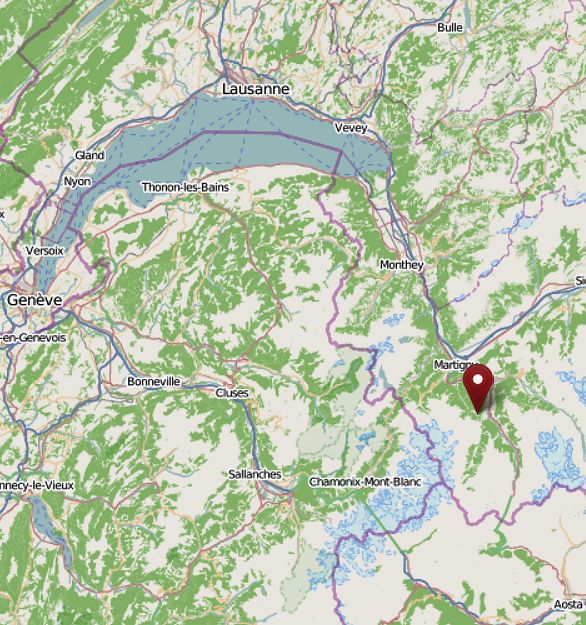
Abb.: Lage von Champex-Lac
[Bildquelle: OpenStreetMap. --
Creative
Commons Lizenz (Namensnennung, share alike)]

Abb.: Champex-Lac, 2014
[Bildquelle: Cyril Gros. --
https://www.flickr.com/photos/tireboushtroupf/14219994761. -- Zugriff am
2014-10-10. --
Creative Commons Lizenz (Namensnennung, keine kommerzielle Nutzung, share
alike)]]
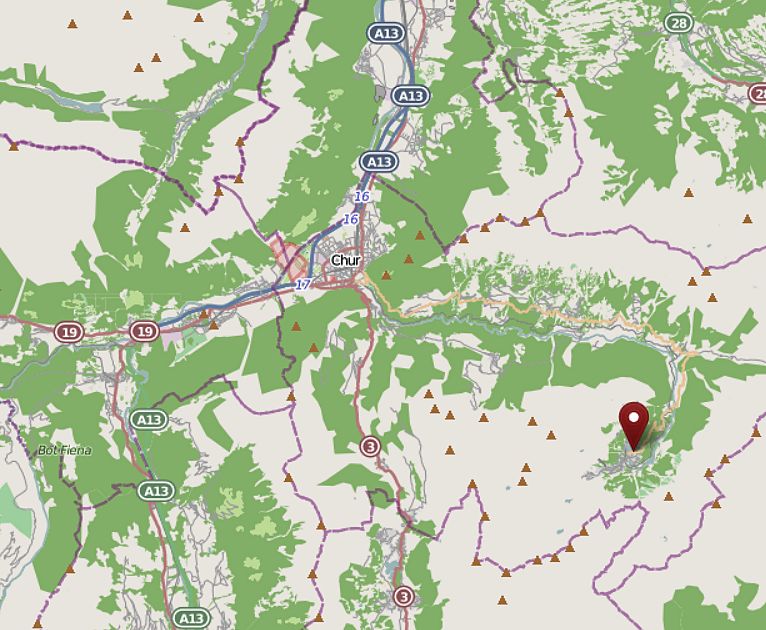
Abb.: Lage von Arosa
[Bildquelle: OpenStreetMap. --
Creative
Commons Lizenz (Namensnennung, share alike)]

Abb.: Arosa, 2014
[Bildquelle: Capricorn4049 / Wikipedia. --
Creative Commons
Lizenz (Namensnenng, share alike)]
1936
Der Khana Ratsadorn [คณะราษฎร] hat sich zu einer Art geschlossener Geheimgesellschaft entwickelt. Die ehemaligen Putschisten bezeichnen sich als ดีหนึ่ง ("Number One Good"). Die Spitze des Klüngels bilden "The Big Five":
Colonel Phya Phahon Phonphayuhasena (พลเอก พระยา พหลพลพยุหเสนา, 1889-1958)
Pridi Phanomyong (ปรีดี พนมยงค์, 1900 - 1983)
Luang Phibulsonggram (พิบูลสงคราม, 1897 - 1964)
Luang Sindhu Songkhramchai (Sindhu Komolnawin) (พลเรือเอก หลวงสินธุสงครามชัย (สินธุ์ กมลนาวิน), 1901 - 1975)
Luang Thawan Thamrongnawasawat (ถวัลย์ ธำรงนาวาสวัสดิ์ / 郑连淡, (1901 - 1988)
1936
Phrae (แพร่ / แป้): Gründung einer Ranger Training School. 1940 wird es zu einem College of Forestry umgewandelt. 1944 wird das College der Kasetsart University angeschlossen. 1954 wird das College an die Kasetsart University (มหาวิทยาลัยเกษตรศาสตร์) in Bangkok verlegt.
Abb.: Lage von Phrae (แพร่ / แป้)
[Bildquelel: CIA. -- Public domain]
1936
Revision des Privatschulgesetzes von 1917
"The Government then passed a law on private schools in 1917, placing all of them under the control of the Ministry of Education. The law was revised to meet the conditions existing in 1936. Briefly, all private schools, teachers, head teachers and managers must be licensed. The conditions, provisions and arrangements of the school must comply with ministerial regulation concerning the quality of teaching, the purpose of teaching, the language of instruction, the number of students in each class, the number and qualifications of teachers to be engaged, hygienic conditions, curriculum, textbooks, examination, registration, the moral and physical training of children, etc. The language of instruction must be Thai, the teachers must have the minimum qualification of a Third Grade Secondary School Certificate or its equivalent. Other languages could be taught in school on application, for a period not exceeding ten hours per week. All religions were tolerated, but teaching in general must not be detrimental to the morals of the people or to public safety. All private schools teaching primary classes must comply also with the law on Primary Education. The State wished the quality of teaching in private schools to be efficient and of a high standard. The private schools existing in 1937 were of two extremes: the foreign missions were doing good work in providing modern education in spite of the fact that the real purpose behind this work was to Christianize the country. The people did not object and, in spite of the high fees charged, the efficiency and sacrifice of the missionaries in the cause of education drew the children to their schools in great numbers. At the other extreme, there were private schools in dirty huts, with incompetent teachers looking after the very dirty little children in order to make money. It is the duty of the State to do away with these inefficient schools or to encourage them to employ better staffs and to provide better accommodation, better teaching, better equipment, all without raising the fees. Education should cost the parents as little as possible so as to keep the door open for less fortunate children. Most private schools have pre-primary and primary departments along with secondary classes in the same schools, so it is sometimes difficult in collecting statistics to separate primary school children from the rest of the school. In 1932 there were 1,307 private schools engaging 1,873 teachers and giving education to 31,701 boys and 18,393 girls, a total of 50,094 children of primary school age. " [Quelle: Manich Jumsai [มานิจ ชุมสาย] <1908 - 2009>: Compulsory education in Thailand. -- Paris : UNESCO, 1951. -- 110 S. ; 22 cm. -- (Studies in compulsory education ; VIII). -- S. 79f. -- Fair use]
1936
Staatliches Straßenbauprogramm: innerhalb von 18 Jahren sollen alle Provinzen per Straße mit Bangkok verbunden werden. Durch den 2. Weltkrieg kommt das Projekt zum Erliegen.
1936
Das Survey Department lässt Landkarten drucken mit den (angeblichen) Grenzen Siams 1782. 10.000 Exemplare werden an Schulen und öffentliche Einrichtungen verteilt, einige werden verkauft. Das Department gibt als Begründung der irredentistischen Karten an, sie dienten dem Geschichtsstudium.
1936
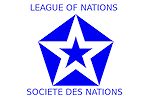
Der Völkerbund rechnet Siam zu den Ländern mit den meisten Drogenabhängigen (Opium, Morphin)
1936
Verstaatlichung der Schnaps-Industrie, Bisher war sie in der Hand von Chinesen. Die Verstaatlichung ist ein finanzieller Erfolg.
1936
Auf Ko Samui (เกาะสมุย) wird ein Teochiew-Chinese (潮州人) von Hainan-Chinesen (海南人) verprügelt, weil er den Hainan-Händlern Konkurrenz machen und sie unterbieten wollte. Koh Samui ist fest in der Hand von Hainan-Chinesen.
Abb.: Lage von Ko Samui (เกาะสมุย)
[Bildquelle: OpenStreetMap. -- Creative Commons Lizenz (Namensnennung, share alike)]
1936
Abb.: Dorfjugend, Chantaburi (จันทบุรี), 1936
Abb.: Lage von Chantaburi (จันทบุรี)
[Bildquelle: CIA. -- Public domain]
1936
Abb.: Schule, Ratchaburi (ราชบุรี), 1936
Abb.: Lage von Ratchaburi (ราชบุรี)
[Bildquelle: CIA. -- Public domain]
1936
Abb.: Frauen, Kantharawichai (กันทรวิชัย), 1936
Abb.: Lage von Kantharawichai (กันทรวิชัย)
[Bildquelle: OpenStreetMap. -- Creative Commons Lizenz (Namensnennung, share alike)]
1936
Abb.: Miss Siam (นางสาวสยาม) 1936: Wongduean Bhumiratna (วงเดือน ภูมิรัตน์)
[Fair use]
1936
Abb.: Dauerwellen, 1936
1936/1937
Dürre.
Abb.: Durch Hochwasser bzw. Trockenheit geschädigte Erntefläche in Zentralthailand 1907 - 1941 (in Prozenz)
[Datenquelle: Feeny, David <1948 - >: The political economy of productivity : Thai agricultural development 1880 - 1975. -- Vancouver : University of British Columbia Press, 1982. -- (Asian studies monographs ; 3). -- Zugl.: Diss. Univ. of Wisconsin-Madison. -- 238 S. ; 24 cm. -- S. 70]
1936/1937
Erstmals in seiner Geschichte veröffentlicht das Hauptzollamt einen Rechenschaftsbericht: die Zolleinnahmen sind von 33 Mio Baht im Jahr 1935/36 auf 42 Mio. Baht im Jahr 1936/37 gestigen. 7 Mio. Baht des Zuwachses gehen auf die gestiegenen Zollgebühren zurück.
Abb.: Zolleinnahmen 1935/36 - 1937/38 (in Mio. Baht)
[Datenquelle: Thompson, Virginia <1903 - 1990>: Thailand the new Siam. -- New York : Macmillan, 1941. -- S. 563]
1931 - 1936
Staatseinnahmen durch Opiumsteuer
Abb.: Staatliche Einnahmen aus Opiumsteuer 1931 - 1936 (in Mio. Baht)
[Datenquelle: Thompson, Virginia <1903 - 1990>: Thailand the new Siam. -- New York : Macmillan, 1941. -- S. 728]
1936
Siam nimmt im Inland eine Staatsanleihe über 4 Mio. Baht zu 4% auf. Diese Anleihe soll an verschiedene Städte zu einem Zinssatz von 5% weitergegeben werden für öffentliche Arbeiten.
193x
Von im Lauf der Jahre untersuchten 700.000 Stuhlproben zeigen 65% Hakenwurmbefall. Jahrelang wird eine Anti-Hakenwurm-Kampagne durchgeführt und ca. 2 Millionen Behandlungen vorgenommen.
Abb.: Hakenwurm
[Bildquelle: Wellcome Images. -- Creative Commons Lizenz (Namensnennung, keine kommerzielle Nutzung, keine Bearbeitung)]
Abb.: Kopf des Hakenwurms Necator americanus
[Bildquelle: http://www.dpd.cdc.gov/dpdx/HTML/ImageLibrary/Hookworm_il.htm. -- Zugriff am 2012-03-04. -- Public domain]
Abb.: Lebenszyklus der Hakenwürmer
[Bildquelle: http://www.dpd.cdc.gov/dpdx/HTML/ImageLibrary/Hookworm_il.htm. -- Zugriff am 2012-03-04. -- Public domain]
1936

Die Nationalversammlung lehnt einen Gesetzesentwurf ab, der es Mönchen erlauben würde, Abgeordnete zu werden.
1936

Mönchen und Novizen wird verboten, an Laienschulen unterrichtet zu werden.
1936
Eigentum der Teakholz-Konzessionen
Abb.: Eigentum der Teakholz-Konzessionen 1936 (in Prozent)
[Datenquelle: Thompson, Virginia <1903 - 1990>: Thailand the new Siam. -- New York : Macmillan, 1941. -- S. 468]
1936

Das Landwirtschaftsministerium propagiert den Anbau von Baumwolle für den japanischen Markt:
"In 1936 the Government allotted Tcs. 60,000 to the Department of Agriculture to purchase cotton from the farmers who had raised it, being assured that it could sell all to Japan. Rumors circulated that a state ginning factory would be set up by the end of the year at a cost of Tcs. 261,234, and that tenders for the machinery had already been accepted. The army actually erected an electrically operated spinning and weaving plant at Bangsue [บางซื่อ, in Bangkok] to supply the army with uniforms. Like so many nationalistic countries, Siam seemed to think that simply setting up machinery was going to assure economic salvation. It was expected that the Government would magnanimously take the lead, guarantee the market, and promote the industry without thought of profit. Some of the propaganda employed was quite interesting. The educated Siamese were told that, whereas rice culture was classified as pauper’s work, cotton was a gentleman’s crop. Though necessary to feed the population, rice-growing involved weeks of wallowing in unhealthy mud fields, whereas cotton was a clean and easily harvested crop. Cotton cultivation would get rid of the evils of monoculture, and the money formerly sent out of the country for textile imports would remain in Siam.
Abb.: Lage von Lampang [ลำปาง]
[Bildquelle: OpenStreetMap. -- Creative Commons Lizenz (Namensnennung, share alike)]For the farming class the Government issued posters showing huge money bags that would come into the possession of those who grew the cotton that the Government promised to buy. But in spite of all these exhortations the results around Lampang [ลำปาง
] were deplorable; 27 acres produced only two hap baskets of cotton. The farmers sent to Bangkok for help. The expert who came out took photographs, but he had a hard time to induce the people to show him the worst crops. They became impatient at his interminable delays and demanded an immediate remedy. When he told them that at least eight preliminary steps were essential before they could even begin to cope with the insects that were ruining their crops, they became completely discouraged. Although cotton cultivation seemed to have been dropped from the official agenda, it was only in abeyance until more scientific data could be gathered."[Quelle: Thompson, Virginia <1903 - 1990>: Thailand the new Siam. -- New York : Macmillan, 1941. -- S. 396]
1936

Importe aus Japan machen 25% der gesamten Importe aus. Hauptimportgüter sind Baumwolle und Stahlwaren.
1936
Monatliche Ausgaben einer durchschnittlichen Bangkoker Familie
Abb.: Monatliche Ausgaben einer durchschnittlichen Bangkoker Familie (in Baht) (Monatseinkommen: 120 Baht; Monatsausgaben: 85,50 Baht), 1936
[Datenquelle: Landon (1939), S. 79]
1935/36
Jährliche Einnahmen einer durchschnittlichen Bauernfamilie in Zentralthailand
Abb.: Jährliche Einnahmen einer durchschnittlichen Bauernfamilie in Zentralthailand, 1935.
Jahreseinkommen: 230, 27 Baht (d.h. monatlich: 19, 19 Baht)
[Datenquelle: Landon (1939), S. 80]
1930 - 1937
Löhne von chinesischen Facharbeitern:
Abb.: Durchschnittlicher Tagesverdienst chinesischer Facharbeiter (in Baht): Segelmacher, Zimmermann, Schmied, 1930 - 1936
[Datenquelle: Skinner (1957), S. 218]
Abb.: Durchschnittlicher Tagesverdienst chinesischer Facharbeiter (in Baht): Vorarbeiter von Kulis, Büroangestellter, Steuermann, 1930 - 1936
[Datenquelle: Skinner (1957), S. 218]
1936
Abb.: Polizeitruppe, Lampang (ลำปาง), 1936
Abb.: Lage von Lampang (ลำปาง)
[Bildquelle: OpenStreetMap. -- Creative Commons Lizenz (Namensnennung, share alike)]
1936

Chiang Mai (เชียงใหม่): Eröffnung der (zweiten) Nawarat Brücke (สะพานนวรัฐ). Baufirma: Cleveland Bridge Company, Cambridge (England). 1967 abgerissen.
Abb.: Lage der Nawarat Brücke (สะพานนวรัฐ)
[Bildquelle: OpenStreetMap. -- Creative Commons Lizenz (Namensnennung, share alike)]
1936
Chinesen gründen die Wohlfahrtsgesellschaft Hua Kiaw Poh Teck Sieng Tung Foundation of Thailand (華僑報德善堂 - มูลนิธิป่อเต็กตึ๊ง). Die Gesellschaft wird ein Krankenhaus unterhalten (华侨, Hua Chiew Hospital - โรงพยาบาลหัวเฉียว, eröffnet 1938) sowie armen Chinesen die Bestattung finanzieren sowie eine Reihe wohltätiger Organisationen finanziell unterstützen.
Abb.: Hauptgebäude der Hua Kiaw Poh Teck Sieng Tung Foundation of Thailand (華僑報德善堂 - มูลนิธิป่อเต็กตึ๊ง), 2010
[Bildquelle: Sry85 / th.Wikipedia. -- GNU FDLicense]
1936/37
Studierende an der Chulalongkorn-Universität (จุฬาลงกรณ์มหาวิทยาลัย):
Abb.: Studierende an der Chulalongkorn-Universität (จุฬาลงกรณ์มหาวิทยาลัย), Studienjahr 1936/37
[Datenquelle: Landon (1939), S. 109]
Abb.: Lage der Chulalongkorn-Universität (จุฬาลงกรณ์มหาวิทยาลัย)
[Bildquelle: OpenStreetMap. -- Creative Commons Lizenz (Namensnennung, share alike)]
1929 - 1936

Studium des buddhistischen Dhamma in Thai (Nak Tham 3 - 1 - นักธรรม ๓, ๒, ๑) und in Pali (Parien 3 - 9 - เปรียญธรรม ๓ - ๙ ประโยค):
Abb.: Dhamma-Schulen und Studierende an Dhamma-Schulen (นักธรรม ๓, ๒, ๑), 1929 - 1936
[Datenquelle: Landon (1939), S. 209]
Abb.: Pali- Schulen und Studierende an Pali-Schulen ( เปรียญธรรม ๓ - ๙ ประโยค), 1929 - 1936
[Datenquelle: Landon (1939), S. 209]
1936

Es erscheint auf Thai und Englisch:
Khemo Navayanist <Bhikkhu>: New Buddhist Catechism. -- Bangkok, 1936.
"A new Buddhist catechism, prepared by a European and printed in both Siamese and English in Bangkok, has met with much approval. The preface says: "This catechism has been prepared with the utmost care, and deals only with the original word of the Buddha, as it has been handed down to us in the Sutta- Pittaka of the Pali canon." He expresses thanks to two Siamese who assisted in the production of the book and remarks: "Both of them expressed the hope that it might be of benefit to the new generation which is at the present time putting too much faith and hope in science and civilization, i.e., in the modern materialism of the West, whilst on the other side is neglecting to cultivate the heart through the true and practical religion of the Buddha."
One departure from the original pattern which he criticizes is the previously unquestioned practice among the monks of living in large temples in the cities. In Buddha’s time they lived in the forest. He says that the monks are too much attached to worldly ways. They are fond of society, idle talk, and a comfortable life. He gives as reasons for the change the lack of general education, insufficient knowledge of the Buddha’s deep philosophy, and of the comparative science of religion. The order of the monks retains only the form, not the spirit of the movement. As soon as general education and modern science have, as in the West, penetrated the broad masses, then the Eastern nations may take up again the high aim and ideal of a new Buddhist life and culture. The change is to come within Buddhism through a return to the original teaching interpreted in terms of the best scientific thinking."
[Quelle: Landon (1939), S. 227]
1936ff.
Es erscheint die Regierungszeitschrift
Siam Today / Bangkok : Government Publicity Bureau. -- Ab.: 1939: Thailand Today
1936
Es erscheint:
ไม้ เมืองเดิม [= ก้าน พึ่งบุญ ณ อยุธยา] [Maimuangderm= Kan Pungbun Na Ayudhya] <1905 - 1943>: ขุนศึก [Der Besieger]. -- 9 Bde. -- Unvollendeter Heldenroman über den Kampf unter König Naresuan (สมเด็จพระนเรศวรมหาราช) gegen BurmaDer Roman wird 1976 und 2003 fürs Kino verfilmt, 1959, 1976, 1977, 1980, 1995, 2003, 2012 fürs Fernsehen.
Abb.: Einbandtitel einer modernen Ausgabe
Abb.: Filmplakat 1976
[Bildquelle: th.Wikipedia. -- Fair use]
Abb.: TV-Plakat 2012
[Bildquelle: th.Wikipedia. -- Fair use]Der Verfasser schreibt auch Romane über das Landleben.
1936
Es erscheint der Roman:
ศรีบูรพา [= กุหลาบ สายประดิษฐ์[ [ Sri Burapha = Kulap Saipradit] <1905 - 1974>: ข้างหลังภาพ [Hinter dem Bild]
Abb.: EinbandtitelDer Roman wird 1985 und 2001 für Kino verfilmt, 1981 und 2008 fürs Fernsehen.
Abb.: Filmplakat 2001
[Fair use]
Abb.: Fernsehplakat 2008
[Fair use]
1936
Es erscheint das Thaterstück
วิจิตร วิจิตรวาทการ [Wichit Wichitwathakan] <1898 - 1962>: ละครเรื่องราชมนู [Schauspiel "Rachamanu"]
Abb.: Einbandtitel einer Ausgabe
"If we follow the fundamental methods used by historians to discuss race (chuea chat) [เชื้อชาติ], namely, face, form of the cranium, food, common diseases, local literature, songs, and music, and compare these for current Thai and Khmer, it is clear that the Khmer of today are Thais. I am prepared to prove this truth to any historian." "Rachamanu: Yes, they are Thai like us! They happened to settle down in old Khom [ขอม] territory and came to be called 'Khmer' [เขมร]. The term ‘Khmer’ is an artificial term and in fact we are all Thai brothers.
Soldier: Then we should be friends and not fight each other.
Rachamanu: Yes, there will be no reason to fight for a long time. All of us on Laem Thong [แหลมทอง - Goldene Halbinsel = Suvarnabhumi] are of the same stock. [...]. We Thai [thai rao {ไทยเรา}, referring to the Siamese Thais] are the elder brothers. [...]."
[Übersetzung: Ivarsson, Søren: Creating Laos : the making of a Lao space between Indochina and Siam, 1860-1945. -- Copenhagen : NIAS, 2008. -- 238 S. : Ill. ; 22 cm. -- (Nordic Institute of Asian Studies monograph series ; 112). -- ISBN 978-87-7694-023-2. -- S. 79]
1936
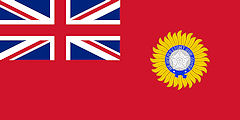
Es erscheint:
Sivaram, M.: The new Siam in the making : a survey of the political transition in Siam, 1932 - 1936. -- Bangkok : Stationers Printing Press, 1936. -- 168 S. ; 19 cm.
Abb.: Einbandtitel
1936

Es erscheint:
Trittel, Walter <1880 - 1948>: Siams Verfassung und Verwaltung. -- In: Mitteilungen der Auslandhochschule zu Berlin, -- Jg. 39 (1936) Abt. 1. -- S. 139 - 168.
1936
Es erscheint:
Legendre, Sidney Jennings <1903 - 1948>: Land of the white parasol and the million elephants. -- New York : Dodd, Mead & Co., 1936. -- 315 S. : Ill. ; 23 cm
"The French had placed such a high duty on all goods entering Indo-China that smuggling has become one of the most essential and profitable if not the most honourable of the native trades. Goods are brought in from Siam at one-third the cost, and then sold in competition with the French products that must bear not only the initial entrance duty at Saigon, but also the heavy freight cost of the three week journey ... Nevertheless, these [Chinese] smugglers ... are not content with the already enormous profits to be made in the most honest transaction of their profession, but have commenced the importation from China of cheap copies of English, French and American goods ... I know this is true in my case, for after buying in a Chinese store what I believed to be a Waterman [gegründet 1884] fountain pen and a pair of "Keds" [gegründet 1916] tennis shoes, I found that they were the rankest imitations." [a.a.O., S. 163. -- Zitiert in:Walker, Andrew <1961 - >: The legend of the golden boat : regulation, trade and traders in the borderlands of Laos, Thailand, China, and Burma. -- Honolulu : Univ. of Hawaii Pr., 1999. -- 232 S. : Ill. ; 25 cm. -- (Anthropology of Asia series). -- ISBN 0-8248-2256-0. -- S. 49. -- Fair use]
Abb.: Waterman-Reklame, 1919
[Fair use]
Keds-Reklame, o.J.
[Fair use]
1936
Straßennetz Siams
Abb.: Vergleich der Straßenkilometer mit der Landesfläche (in km²) zwischen Siam, Britisch-Malaya und Französisch-Indochina 1936
[Datenquelle: Thompson, Virginia <1903 - 1990>: Thailand the new Siam. -- New York : Macmillan, 1941. -- S. 510]
Abb.: Qualität des Straßenetzes Siams 1936 (in Straßenkilometern)
[Datenquelle: Thompson, Virginia <1903 - 1990>: Thailand the new Siam. -- New York : Macmillan, 1941. -- S. 510]
1936
Gründung der Siam Motion Picture Company. Startkapital: 160.000 Baht. Gründer ist ein Neffe Ramas VII.
1936
Es erscheint der nationalistische Film Luat Suphan (เลือดสุพรรณ - Das Blut der Suphan) von Luang Wichitwathakan (หลวงวิจิตรวาทการ / 金良, 1898 - 1962).
Abb.: Filmbuch zu Luat Suphan (เลือดสุพรรณ - Das Blut der Suphan)
[Bildquelle: Barmé (2002), S. 239]
"Blood-brothers of Suphanburi, great at war they were; daring, gallant and unyielding. [We] fear not of enemies; any weapons [knives] at hand were gathered for the fight.
(Chorus) Come forward, come forward, blood-brothers of Suphanburi [สุพรรณบุรี]. Hesitate not, engage [the enemy] blood-brothers of Suphanburi.
How could we be happy if others invade and injure the Thai nation? Tortured and killed as slaves; how could we Thais standstill?
(Chorus repeated)
Thailand must belong to the Thai; come and fight to liberate our motherland. Sacrifice our lives with no fear; come blood-brothers, come, let’s face them.
(Chorus repeated )"
[Übersetzt von Thinaphan Nakhata [ทินพันธุ์ นาคะตะ] <1934 - >. -- In: Thai politics : extracts and documents 1932 - 1957 / ed. by Thak Chaloemtirana <ทักษ์ เฉลิมเตียรณ>. -- Bangkok : Social Science Ass., 1978. -- 884 S. ; 25 cm. -- S. 371. -- Fair use]
1936
In Bangkok gibt es 205 rein chinesische Schulen. Sie unterrichten nur in Chinesisch, wechseln aber zu Siamesisch, wenn die Wachposten melden, dass ein Schulinspektor kommt.
1936
Dr. George Bradley McFarland (1866 - 1942), erster Professor für westliche Medizin in Siam, über die Schwierigkeiten, westliche Medizin einzuführen:
"George Bradley McFarland was born in 1866 to Rev. Samuel Gamble McFarland and Jane Hays McFarland while they were serving as missionaries in Siam (now Thailand). Except for a few years spent in the United States to obtain medical and dental degrees, George McFarland lived most of his life in Siam." [Quelle: http://www.oac.cdlib.org/findaid/ark:/13030/kt8489r0b1/. -- Zugriff am 2012-03-04]
"Dr. George B. McFarland, the first professor of modern medicine in Siriraja Hospital (ศิริราชพยาบาล), relates some of the difficulties he met in winning public approval. Siamese medicine had to be taken in large quantities and people distrusted small pills. One day a lot of quinine was missing from the dispensary. Dr. McFarland asked the clerk who had bought it. He reported that a doctor of Siamese medicine had taken the quinine to mix with Siamese medicine for fever. The doctor had discovered that quinine was a remarkable aid. Respect for the new medicines was often won in such a roundabout way as this. Dr. McFarland says that great difficulty was experienced in the collecting of samples of blood for inspection. Patients refused to have incisions or cuts made, on the grounds that their wind would come out and their blood would flow without ceasing, if they did. He tells how one day some lead and opium pills were put out in the sun to dry. A little girl, who was playing around, got some of them and swallowed them. She was in a serious condition when the doctor found her and revived her. It was an opportunity to teach the medical students the treatment for opium poisoning. That incident also succeeded in teaching them that even small pills have great powers.
Again, when plague first came to Bangkok the doctors were unfamiliar with it. Men in the prisons died rapidly. A Siamese doctor took a corpse for examination. During the process the back of his hand was slightly wounded and became infected. The doctor paid no attention to it and in a day or two was dead. This incident demonstrated to the medical students that disease could spread from person to person by infection.
And again, a number of stone operations had been performed and the stones kept for the students to examine. One day three stones disappeared. They had been taken by a doctor of Siamese medicine who ground them up and made a medicine for the removal of stones from the bladder. He did this on the basis of a Siamese proverb that parallels the one about the hair of the dog being good for his bite."
[Quelle: Landon 81939), S. 121
1936
Erste öffentliche Leichtathletik-Wettkämpfe für Männer und Frauen.
1936
Abb.: Prunkschiffe vergangener Zeiten: königliches Schiff aus Siam
[Bildquelle: Liebig's Sammelbilder, 1936]
1936

Erstmals landet ein Flugzeug der Lufthansa in Bangkok. Es ist eine Ju 52.
Abb.: Ju52, 1936
[Bildquelle: Wikimedia. -- Public domain]
1936

Es erscheint das Sammelbilderalbum:
L'Asie : album d'images / édité par Chocolat Pupier. -- [Saint-Etienne] : Chocolat Pupier, [ca. 1936]. -- 28 S. : 235 Sammelbildchen ; 32 cm. -- Enthält 9 Bildchen über Siam.
Abb.: Umschlagtitel
Abb.: Siam - Soldats d'aujourd'hui
[Fair use]
1936
Kleidungsvorschriften für Touristen, die Wat Phra Kaeo (วัดพระแก้ว) besuchen wollen:
"Rule 1. Visitors must dress properly. Western dress for men must include collar and necktie. Visitors wearing knickerbockers, plus fours, shorts, blazers or sweaters will not be permitted in the grounds of the Temple of the Emerald Buddha."
1936
Eine deutsche Handelsmission besucht Siam, um den beidseitigen Handel anzukurbeln.
1936
Die I. G. Farbenindustrie AG bringt den ersten modernen Farbfilm auf den Markt: Agfacolor Neu.
Abb.: Verpackung
[Bildquelle: Wikimedia. -- Public domain]
1936 - 1943

Charles Lépissier ist französischer Gesandter in Siam.
1936

""Asia for the Asiatics" was certainly acceptable to any Asian, but at the same time something more in line with "Asia for the Japanese" was actually practised. Towards the end of 1936, airmen under the auspices of Japanese newspaper Asahi Shimbun [朝日新聞] paid a visit to Siam. When it arrived the aircraft flew around the precincts of the aerodrome in a manner which aroused the suspicions of a British subject who was the traffic manager of the Aerial Transport Company of Siam. He and his men inspected the machine and found a well hidden automatic mapping camera, complete except for the film pack, plus a complete bomb release apparatus concealed behind the rear cockpit, and many other gadgets. The machine was thus a military one in disguise by affixing to it a civil number. This was reported to the Director of the Royal Aeronautic Service who passed it on to the Siamese government but no action was taken, and the whole incident, which could legitimately have discredited the Japanese, was played down. This showed the increasing fear the Siamese had to live with at the time while they dared not antagonize any neighbouring powers." [Quelle: Charivat Santaputra [จริย์วัฒน์ สันตะบุตร]: Thai foreign policy 1932-1946. -- Bangkok : Thai Khadi Research Institute, Thammasat University, 1985. -- 465 S. ; 21 cm. -- ISBN 974-335-091-8. -- S. 152f.]
1936 - 1942-07
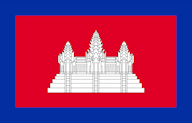
Kambodscha: es erscheint die erste Zeitung in Khmer:
នងរវតត = Nagara Vatta : hebdomadaire paraisant tous les samedis <Phnôm Penh > / gegründet von Pach Chhoeun (ប៉ាច ឈឺន) <1896 - 1971> and Sim Var
Abb.: Titelbalken 1937-02-20
1936

USA: Einführung des Selbstladegewehrs (Gasdrucklader) M1Garand. Es ist bis 1957 das Standardgewehr der US-Streitkräfte. Auch Thailands Militär wird diese Gewehr benutzen.
Abb.: M1Garand (1945) mit Munition
[Bildquelle: Curiosandrelics / Wikipedia. -- GNU FDLicense]
Abb.: Sgt. John C. Clark...and S/Sgt. Ford M. Shaw...(left to right) clean their rifles in bivouac area alongside the East West Trail, Bougainville. They are members of Co. E, 25th Combat Team, 93rd Division..." April 4, 1944.
[Bildquelle: Lt. Schuman / Wikimedia. -- Public domain]
1937
Zensus
Abb.: Einwohner gemäß Zensus in Mio., 1911 - 1947
[Datenquelle: Ingram (1971), S. 46]
1937
Die Royal Thai Air Force (กองทัพอากาศไทย) wird eine selbständige Teilstreitkraft neben Heer (กองทัพบกไทย) und Marine (กองทัพเรือไทย). Alle drei Teilstreitkräfte (กองทัพไทย) unterstehen direkt dem Verteidigungsministerium (กระทรวงกลาโหม).
1937
Cholera-Epidemie: pro Woche 440 Erkrankungen mit 292 Toten; Höhepunkt: Woche mit 844 Erkrankungen mit 595 Toten, davon 112 in Bangkok. Tausende werden gegen Cholera geimpft. Die Epidemie endet erst als die Regenzeit die Kanäle auswäscht.
Abb.: Cholera-Kranker
[Bildquelle: http://www.cdc.gov/cholera/disease.html. -- Zugriff am 2012-03-04. -- Public domain]
1937
Gründung des Mission Hospital (โรงพยาบาลมิชชั่น).
Abb.: Lage des Mission Hospital (โรงพยาบาลมิชชั่น)
[Bildquelle: OpenStreetMap. -- Creative Commons Lizenz (Namensnennung, share alike)]
Abb.: ®Logo
[Bildquelle: Wikipedia]
"Bangkok Adventist Hospital (โรงพยาบาลมิชชั่น) is a general hospital with registered capacity of 200 beds and 24 bassinets, situated in Bangkok, Thailand. The hospital is widely known among Thai people as "Mission Hospital". It is owned and operated by the Christian Medical Foundation of the Seventh-day Adventist Church, and is a part of global Adventist healthcare network. Bangkok Adventist Hospital was one of the ten private hospitals in Thailand that received Hospital Accreditation (HA).[1]
HistoryThe hospital was founded in 1937 by funds of Captain Thomas Hall, a sailor, and operated by Dr. Ralph Waddell, his wife Ellen, Nai Pleng Vitiamyalaksna and pastor Kon Vui-leong. In 1940 the facility was expanded to additional 30 beds and became known as the "Annex". At the beginning of the Second World War in South East Asia the Annex was closed and all missionaries left the country. But part of the clinic continued its operation under the direction of Nai Pleng, a medical assistant, and a Romanian physician Dr. S. Bene. In 1946 overseas staff returned to the Hospital. The former Annex was made the initial building for the "Bangkok Sanatorium & Hospital".
The Bangkok Adventist Hospital School of Nursing was established in 1947. In 1986, a Bachelor of Science in Nursing was begun and accredited. In 1997 the school of nursing merged along with Southeast Asia Union College (S.A.U.C) and Mission College to form Mission College (accredited by the Ministry of University Affairs, 1994. On August 4, 2008 Mission College received university status from the Royal Thai Government and was renamed Asia-Pacific International University (A.I.P). Two years of pre-clinical studies are on the Muak Lek, A.I.P. campus with two years of study are on the Bangkok Adventist Hospital/A.I.P. campus. The hospital A.I.P. campus includes classroom, library and dormitory facilities along with clinical nursing facilities in the hospital.
In 1955 School of Midwifery and School of Nursing were officially opened. In 1958 the total bed capacity was increased to 180.
In 1973 the Hospital adopted the name "Bangkok Adventist Hospital". The new Ralph Waddell Wing to expand patients accommodation was opened in 1983.
At the 50th anniversary of the facility, a new Pleng Vitiamalaksna building was established to provide beds for Obstetric and Pediatrics along with some auxiliary services.
In 1990, Mission Health Promotion Center capable of housing 60 people was launched in the Province of Saraburi. The Health Promotion Center is located adjacent to the Muak Lek campus of Asia-Pacific International University.
Currently, the hospital is undergoing extensive physical renovation. Projected completion date is .
ActivitiesIn 2003 the hospital received about 6000 patients and treated 180,000 outpatients. At present Bangkok Adventist Hospital has 410 employees and about 90 medical staff.
Besides accommodating and treating patients in its rooms, the Hospital runs a Mobile Clinic equipped with X-ray unit, which is frequently applied for charitable medical actions.
The slogan of the Hospital is "Come Feel the Difference", which means difference in quality of service, equipment, spiritual atmosphere, good food, qualification of physicians. The declared mission is "to share God's love through innovative delivery of healthcare".
The services include: acupuncture, allergy, asthma service, surgery, obstetrics & gynaecology, emergency, cancer care, cardiopulmonary, cosmetic surgery, diabetes, ear nose & throat, family practice, gastrointestinal care, golden year, health checkup (wellness), home care, internal medicine, laboratory, men's health, nephrology, neurology, occupational medicine, ophthalmology, orthopaedics, pastoral care, pharmaceutical, radiology / imaging service, rehabilitation services, skilled nursing care, skin & beauty, special procedure, children service and dental.
Currently the hospital is not subject to scrutiny though international healthcare accreditation."
[Quelle: http://en.wikipedia.org/wiki/Bangkok_Adventist_Hospital. -- Zugriff am 2011-11-13]
1937
Factory act. Enthält minimale Arbeitsschutzbestimmungen.
1937
Anlauf des 16mm-Films Muang Thong (เมืองทอง) von Luen Phongsophon (เลื่อน พงษ์โสภณ).
1936-04
Zum zwölften Mal innerhalb von sieben Jahren werden die Zolltarife geändert.
1936-04
Bangkok: 14 Kommunisten werden bei einer Versammlung festgenommen, darunter ein Komintern-Agent aus Shanghai, vier Mitglieder des Zentralkomitees der Kommunistische Partei Siams (Communist Party of Siam / 共產黨暹羅 / Đảng Cộng sản Siam / พรรคคอมมิวนิสต์แห่งสยาม); unter diesen Le Manh Trinh (1896—1983), ein vietnamesischer Spitzenfunktionär,d er 1928 zur Strafe nach Siam geschickt worden war.
1936-04

"Im April 1936 äußerte der thailändische Außenminister, Luang Pradit Manutham [หลวงประดิษฐมนูธรรม = Pridi Phanomyong - ปรีดี พนมยงค์, 1900 - 1983], gegenüber Herrn Stoller, einem hochrangigen Beamten der deutschen Gesandtschaft, seine Besorgnis über die rassistische Vorstellung im Dritten Reich. Stoller erwiderte darauf, dass die rassistischen Maßnahmen sich nur auf die Juden richteten. Er erklärte, dass Deutschland koloniale Absichten nur in Afrika verfolgte und dass Thailand ein Freund Deutschlands sei. Der thailändische Außenminister gab sich zufrieden und Deutschland genoss weiterhin die Sympathie der Thailänder." [Quelel: Catthiyakorn Sasitharamas [คัททิยากร ศศิธรามาส]. -- In: Sawasdee : 150 Jahre Deutsch-Thailändische Freundschaft, 50 Jahre Deutsch-Thailändische Gesellschaft / Andreas Stoffers (Hrsg.). -- Rosenheim : Rosenheimer, 2012. -- 240 S. : Ill. ; 28 cm. -- ISBN 978-3-475-54134-6. -- S. 62]
1936-04


Es erscheint;
Tōta Ishimaru [石丸, 藤太] <1881 - 1942>: Japan must fight Britain / translated by G.V. Rayment. -- New York : Telegraph Press, 1936. -- 329 S. : Ill. ; 21 cm. -- Originaltitel: 日英必戰論 (1933)
Abb.: Titelblatt einer Ausgabe 1938
"Relations with Siam. One more point—the attitude of Siam. This country lies
across the northern end of the Malay Peninsula, as a glance at the map will show, and with its backing our operations against Singapore would obviously be facilitated. Its alliance with us would bring the people of India out in open revolt and leave Singapore in a precarious position.
Fortunately, we gained the goodwill of Siam over the last 42-to-i vote in the League of Nations. But the Japanese people, though conscious that they have her goodwill, do not realize how valuable it might be to them in connexion with operations against Singapore and in the South China Seas in the coming war with England.
We must bear in mind that our relations with her have their strategical as well as their commercial side."
[a.a.O., S. 218f.]
1936-04-18 - 1943-10-01

The Marquess of Linlithgow (1887 - 1952) ist Governor-General and Viceroy of India
1936-04-20 - 1936-05-02

Bandung (Niederländisch Ostindien): Conference of Central Authorities of Middle East and Far Eastern Countries on the Traffic of Women
Abb.: Lage von Bandung
[Bildquelle: OpenStreetMap. -- Creative Commons Lizenz (Namensnennung, share alike)]
"At the League of Nations Bandoeng Conference in 1936, on international traffic in women and children, the Thailand delegate reported that such traffic was decreasing. When asked why, the answer given was: The numbers of Chinese brothels and prostitutes have become considerably smaller. This circumstance has been partly due to the economic depression and partly to the stricter control of immigration.
In answer to a question for further information this representative said:
In past years the majority of those who frequented brothels were Chinese from Hainan whose women seldom migrated with their men. The number of Hainanese female immigrants who have become more domestic in their habits has increased. This is believed to have an indirect effect on the traffic.
Thailand’s report showed that the number of Thai brothels remained about the same from 1930 to 1936, although the number of women registered decreased from 138 to 97. During the same period Chinese brothels decreased from 137 to 63 and the number of women from 646 to 326. The following statement was made:
It should be noted that out of the total of seventy provinces in the whole Kingdom of Siam there are only four, including the capital city of Bangkok, in which tolerated or licensed brothels exist. In each of the three interior provinces, however, the number of prostitutes are only to be numbered by tens. The Committee above referred to have already submitted an ad interim report recommending gradual abolition."
[Quelle: Landon, Kenneth Perry <1903 - 1993>: The Chinese in Thailand. -- Londondon : Oxford UP, 1941. -- 310 S. ; 23 cm. -- (International Research Series of the Institute of Pacific Relations). -- S. 95f.]
1936-05
Erstausgabe der englischsprachigen Tageszeitung Siam Chronicle. Sie ist in siamesischem Besitz, aber USA-freundlich. Bald darauf erscheint eine siamesische Ausgabe: Nikorn (นิกร). Auflage der Chronicle: 3.000 bis 4.000 (zum Vergleich: Bangkok Times: 1.000 bis 1.200).
1936-05
Zeitungsartikel von amtierendem Ministerpräsidenten Plaek Phibunsongkhram (แปลก พิบูลสงคราม, 1897 - 1964): Wenn die Neue Regierung Erfolg haben soll, muss sie "apply dictatorship". Der Aufsatz erregt Aufsehen und Befürchtungen.
1936-05
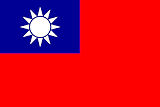
Eine chinesische Handelsdelegation kommt nach Siam "to interpret China to our Siamese friends". In Bangkok wird eine China-Siam Society gegründet. Die Delegation spendet 1.000 Baht für die Thammasat University (มหาวิทยาลัยธรรมศาสตร์).
1936-05-03

Frankreich: aus den Wahlen geht eine Volksfrontregierung (Front populaire) aus Sozialisten und Radikalen (mit Unterstützung der Kommunisten) hervor. Dies führt zu einem Erstarken der kommunistischen Bewegungen in Französisch Indochina.
1936-05-09
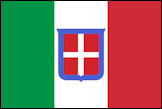
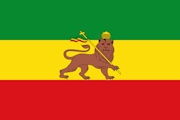
Italien annektiert Abessinien (Äthiopien).
Abb.: Africa Orientale Italiana, 1936
[Bildquelle: Instituto Geographico Militare, 1936. -- Fair use]
1936-05-12


Nach großen militärischen Erfolgen gründen die Japaner in der Inneren Mongolei den pseudo-souveränen Staat Mengjiang (蒙疆).
Abb.: Lage von Mengjiang (蒙疆)
[Bildquelle: Emok / Wikipedia. -- GNU FDLicense]
1936-06/07

Konferenz des Völkerbunds in Bandung (Nederlands-Indië) über Frauenhandel und Prostitution.
Abb.: Lage von Bandung
[Bildquelle: OpenStreetMap. -- Creative Commons Lizenz (Namensnennung, share alike)]
"A questionnaire was given to the delegate from each nation to fill out. One question was: "Has the trend of traffic in women and children for immoral purposes to or from or through the territory under consideration undergone any change?" Siam answered that there was no marked change. A second question was: "Has the volume of such traffic in women and children for immoral purposes increased or decreased since 1931?" Siam’s answer was that it had decreased.
A third question was: "Can you give any reasons for the changes indicated in the replies to the above questions?" Siam answered:
The numbers of Chinese brothels and prostitutes have become considerably smaller. This circumstance has been partly due to the economic depression, and partly to the stricter control of immigration. As an example of the latter, three cases of offences against the Traffic in Women and Girls Act, 1928-29, involving four traffickers and nine victims have been discovered since last April. The offenders in the last case were sentenced to three years imprisonment.
A fourth question was: "Can you give, with regard to recent changes in traffic in women and children for immoral purposes, any other information of general interest not covered by the above question?" Siam answered:
In past years the majority of those who frequented brothels were Chinese from Hainan whose women seldom migrated with their men. The number of Hainanese female immigrants who have become more domestic in their habits has increased. This is believed to have an indirect effect on the traffic.
In a later question it was asked if there were women officials who might share in the work for women. Siam’s representative explained:
The system of compulsory education for both sexes and the improvement of the status of women who now have the right to vote, and the opportunity of governmental or commercial employment, are important contributions
toward any improvement of basic conditions. The ground is thus prepared for more specialized welfare work in which women especially can play a more important role. A certain number of women are already in the police force, but for this aspect of welfare work special training and experience are essential.
Siam’s report then showed that the number of Siamese brothels, from 1929 to 1936, remained about the same, although the number of women had gone down from 138 to 97. During the same period Chinese brothels decreased from 137 to 63, and the women from 646 to 326 in number. After that information the following note is given:
It should be noted that out of the total of seventy provinces in the whole Kingdom of Siam there are only four, including the capital city of Bangkok, in which tolerated or licensed brothels exist. In each of the three interior provinces, however, the number of prostitutes are only to be numbered by tens. The Committee above referred to have already submitted an ad interim report recommending gradual abolition."
[Quelle: League of Nations Bulletin. -- 1936-07-01. -- Zitiert in Landon (1939), S. 163]
1936-06
Bei Durchsuchungen in chinesischen Schulen werden einige Exemplare von Sun Yat-sen's [孫逸仙] <1870 - 1925> Drei Prinzipien des Volkes (三民主義) gefunden. Chinesen überlegen, für ihre Kinder chinesische Schulen in Malaya zu errichten. Daraufhin beschließt die Regierung, dass Schüler, die Siam verlassen, eine Gebühr von 500 Mexikanischen Dollar zu zahlen haben.
1936-06
Es erscheint
Lin Yu: Twin loyalities in Siam. -- In: Pacific Affairs. -- 1936-06
"The Chinese own and operate 80 or 90% of the rice mills, the biggest industry in Siam, and their interest is not confined to the milling of rice. More often than not the Siamese farmer has to borrow from a Chinese in order to live between sowing and harvest, and after the harvest it is the Chinese dealer who buys the padi and transports it to the mills at Bangkok. After milling, again, it is the Chinese import and export trader in Singapore and Hongkong who handles three-quarters of the rice exported from Siam, and most of the actual consumers of this rice are Chinese, either in China or abroad." [Zitiert in: Landon, Kenneth Perry <1903 - 1993>: The Chinese in Thailand. -- Londondon : Oxford UP, 1941. -- 310 S. ; 23 cm. -- (International Research Series of the Institute of Pacific Relations). -- S. 124]
1936-06-04


Die Tageszeitung Warasap [วารศัพท์] berichtet über Gerüchte, wonach die Mutter des Königs [สมเด็จพระศรีนครินทราบรมราชชนนี, 1900 - 1995] zum Christentum konvertiert sei. Die Regierung belegt die Zeitung deswegen mit einem Verbot für 30 Tage.
1936-06-09

General Chen Jitang (陳濟棠, 1890 - 1954) befiehlt in den südchinesischen Provinzen Guangdong (廣東) und Guangxi (廣西) die allgemeine Mobilmachung. Dadurch soll die Zentralregierung zu Maßnahmen gegen japanische Okkupationsbestrebungen in Nordchina gezwungen werden.
Abb.: Lage der Provinzen Guangdong (廣東) und Guangxi (廣西)
[Bildquelle: CIA. -- Public domain]
1936-06-10


Die Bangkok Times berichtet, dass Japan mit den in Siam lebenden Indern Kontakt aufgenommen hat wegen Widerstands gegen die britische Kolonialherrschaft.
1936-06-16
Bangkok Times Weekly Mail: Luang Phibulsonggram (พิบูลสงคราม, 1897 - 1964) lässt erklären, dass Sicherheit und Wohlstand Siams nur garantiert werden können, wenn die Regierung diktatorische Vollmachten hat.
1936-06-24
Vierter Jahrestag des Putsches.
1936-06-26
Erstflug des Focke-Wulf Fw 61, des ersten funktionsfähigen Hubschraubers. Konstrukteur ist der deutsche Ingenieur Heinrich Focke (1890 - 1979)
Abb.: Fw 61
[Bildquelle: Emoscopes / Wikimedia. -- Creative Commons Lizenz (Namensnennung, share alike)]
1936-07
Es erscheint:
Luang Pradist Manudharm [หลวงประดิษฐ์มนูธรรม = Pridi Phanomyong - ปรีดี พนมยงค์] <1900 - 1983>: Unimpaired balance in world friendships is the watchword of Siamese foreign policy. -- In: Siam Today <Bangkok>. -- 1936-07
"Any misunderstandings between China and Siam are built mainly on ignorance of the facts and on prejudice. For instance, Chinese newspapers have reported that "The Siamese Ministry of Public Instruction forbids the teaching of the Chinese language to Chinese children in Siam." The Primary Education Law in Siam was enacted years ago, but efficiency in its enforcement is more recent. What the Ministry of Education insists on enforcing, is that a certain number of hours per week be devoted to the teaching of the Siamese language in Chinese and in other foreign-owned and foreign-managed schools. When Chinese immigrants choose to settle down in Siam, it is but natural that their children should be afforded the educational background which will qualify them for their social and political status and responsibilities as sons of the soil. As a nation engaged in developing a democratic form of government in which the people will have the predominant voice in the administration, it is but just and right that every future citizen of the land should be acquainted with the national language, at least up to a certain minimum standard." [a.a.O., S. 9ff. -- Zitiert in: Landon, Kenneth Perry <1903 - 1993>: The Chinese in Thailand. -- Londondon : Oxford UP, 1941. -- 310 S. ; 23 cm. -- (International Research Series of the Institute of Pacific Relations). -- S. 273f.]
1936-07

Bericht der deutschen Kommission zur Untersuchung der Wirtschaft im Fernen Osten (Kommission Kiep). Die Kommission unter Leitung von Otto Carl Kiep (1886 - 1944) besuchte Japan, China, die Mandschurei und Siam. Die Kommission gewinnt in Siam den Eindruck
dass "die natürlichen Voraussetzungen in beiden Ländern für einen stärkeren Wirtschaftsverkehr günstig" sind. [Zitiert von: Catthiyakorn Sasitharamas [คัททิยากร ศศิธรามาส]. -- In: Sawasdee : 150 Jahre Deutsch-Thailändische Freundschaft, 50 Jahre Deutsch-Thailändische Gesellschaft / Andreas Stoffers (Hrsg.). -- Rosenheim : Rosenheimer, 2012. -- 240 S. : Ill. ; 28 cm. -- ISBN 978-3-475-54134-6. -- S. 57]
Die deutsche Regierung weist darum die Gesandtschaft in Bangkok an, der Regierung Siams mitzuteilen, dass das Deutsche Reich viel stärker als bisher seinen Bedarf an Zinn in Siam decken will.
1936-07

Bangkok: Eröffnung einer Niederlassung der Yokohama Specie Bank (横浜正金銀行)
Abb.: Ehemaliger Sitz der Yokohama Specie Bank (横浜正金銀行), Yokohama, Japan
[Bildquelle: 663highland / Wikipedia. -- GNU FDLicense]
1936
Yala (ยะลา / Jolor): 200 Kulis in Zinkminen streiken erfolglos gegen eine 10prozentige Lohnkürzung.
Abb.: Lage von Yala (ยะลา / Jolor)
[Bildquelle: CIA. -- Public domain]
1936-08-27
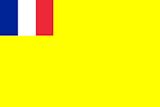
Frankreich amnestiert 1532 politische Häftlinge Indochinas.
1936-09 - 1938-08

Sowjetunion: Großer Terror aka Große Säuberung (Большая чистка)
Abb.: "Erste Seite einer Liste von 1940 mit den Namen von 346 zur Erschießung vorgesehener Personen. Als Nummer 12 ist Isaak Babel genannt. Stalin bestätigt die Liste mit einem „dafür“ und seiner Unterschrift." Es existieren 383 solcher Listen mit Stalins Unterschrift.
[Bildquelle: Wikimedia. -- Public domain]
"Der Große Terror – auch als Große Säuberung (russisch Большая чистка, Bolschaja tschistka) oder Jeschowschtschina‚ Jeschow-Herrschaft) bezeichnet – war eine von Herbst 1936 bis Ende 1938 dauernde umfangreiche Verfolgungskampagne in der Sowjetunion. Die Durchführung dieser von Josef Stalin (Ио́сиф Виссарио́нович Ста́лин, 1878 - 1953) veranlassten und vom Politbüro (Политбюро) gebilligten Terrorkampagne lag bei den Organen des Innenministeriums der UdSSR (NKWD - НКВД) unter Leitung von Nikolai Jeschow (Николай Иванович Ежов, 1895 - 1940). Der Terror richtete sich vor allem gegen mutmaßliche Gegner der stalinistischen Herrschaft und als unzuverlässig angesehene „Elemente“ oder Gruppen. Als Großer Terror im engeren Sinn wird der Zeitraum von Juli 1937 bis Mitte November 1938 verstanden. Allein in diesen Monaten kam es zur Verhaftung von etwa 1,5 Millionen Menschen, von denen etwa die Hälfte erschossen, die anderen bis auf wenige Ausnahmen in die Lager des Gulag (Главное управление лагерей) oder in Gefängnisse verbracht wurden. Die umfassenden Repressionen gelten als Höhepunkt einer Kette von Säuberungswellen (Чистки) der Stalin-Ära.
Die für den Terror Verantwortlichen inszenierten anfangs eine Serie von Schauprozessen, zu deren bekanntesten die Moskauer Prozesse (Московские процессы) gehören, vorrangig gegen Eliten in Politik, Militär, Wirtschaft, Verwaltung, Wissenschaft und Kultur. Die geheimen „Massenoperationen“ ab Mitte 1937, von denen so genannte Kulaken (кулак), „sozial schädliche“ und „sozial gefährliche Elemente“ sowie ethnische Minderheiten betroffen waren, forderten allerdings eine weit größere Opferzahl."
[Quelle: http://de.wikipedia.org/wiki/Gro%C3%9Fer_Terror_%28Sowjetunion%29. -- Zugriff am 2013-10-16]
1936-09-23 - 1937-02-20
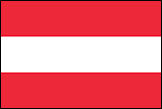
Die österreichischen Völkerkundler Hugo (1897 - 1953) und Emmy Bernatzik (1904 - 1977) bereisen die Grenzregion zwischen Siam und Indochina sowie Vierländerecke Burma-Siam-China-Indochina. Sie "entdecken" die Phi Tong Luang (ผีตองเหลือง / ຜີຕອງເຫລືອງ / Geister der gelben Blätter; heute: Mlabri - มลาบรี)
Emmy Bernatzik über ihren Aufenthalt in Bangkok:
"Dafür skizzierte Emmy ausführlich einen ehemaligen britischen Kolonialbeamten namens Francis G. Gile [Francis H. Giles, der nach dreißig Jahren als Berater der siamesischen Regierung seinen Ruhestand genoss und überdies einen siamesischen Namen angenommen hatte: Phya Indra Montri [พระยาอินทร์มนตรี]. „Er ist seit zehn Jahren ganz blind (Syphilis?)", führte sie aus, „hat schönes großes Bungalow und vier bis sechs siamesische Frauen, angeblich vierundzwanzig Kinder. Frauen fabelhaft abgerichtet, er hat verschiedene Pfeifen neben sich, für jede Frau eine andere und wenn er pfeift, kommen sie sogleich gesprungen. Man liest ihm vor, er diktiert, unerhört belesen und gebildet. Spricht gern und viel und gut. Gerne ethnologische Themen, kennt viele Völker, liebt Dschungelleben, weiß viel mehr als Hugo, der »Wissenschaftler". (...) Ach Gott, nichts ist mir lieber an einem Menschen als umfangreiches, tiefes Wissen!"
Auf einer Abendgesellschaft im Deutschen Klub lernte sie allerdings auch einen Kanonenfabrikanten namens Rüppel oder Büppel kennen, der den Kriegsausbruch kaum erwarten konnte und den sie als „typisch unsympathischen Deutschen" empfand. Hingegen gefiel ihr der bayrische Arzt Otto Schwendt [1892 - ], der das Ehepaar bei diversen Unpässlichkeiten behandelte, wegen seiner Natürlichkeit - und seines Erfolges.
„Er kam als junger Missionsarzt nach Südchina", schrieb sie, „lebt seit 10 Jahren in Bangkok. Im ersten Jahr hatte er als Gesandtschaftsarzt Unterstützung. Kam dann alleine in die Höhe. Seitdem erhält er keinen Heller als Gesandtschaftsarzt, obwohl reichlich in Anspruch genommen. Spricht gut Chinesisch und Siamesisch, hat reiche siamesische Prinzenfamilien als Patienten, muss enorm verdient haben. (...) Hat teure Sammlungen, drei Autos, Haus am Chiemsee. (...) Dies der Lohn für sechs Jahre ohne Urlaub in Bangkok - getrennt von den Seinen. (...) Er ist sehr dick, doch auch stattlich, eineinhalb Kopf größer als Hugo, Herz etwas verfettet. Hat viele ausgezeichnete Bücher über Kunst, Literatur, Philosophie, wundervolles Grammophon (1000 Mk!) liebt ernste Musik, guter Geschmack in allem, erzählt von seinen Lustgefühlen beim Einkäufen von Sammlungsgegenständen. (...) Durch rasende Einkauferei der Diplomaten seien Preise in Bangkok zu hoch. (Wir hoffen in Chieng Mai billiger zu kaufen, wenn überhaupt!). (...) Seine Frau ist Ärztin, über 40, Brille, scheint harten Schädel zu haben wie alle 'emanzipierten Frauen'. Haushälterin Me Pong ist eine liberale, jetzt schon rundliche Siamesin, sichtlich seine 'zweite Frau'. Schaut sie immer strahlend an, spricht deutsch mit ihr."
[Quelle: Byer, Doris <1942 - >: Der Fall Hugo A. Bernatzik : ein Leben zwischen Ethnologie und Öffentlichkeit ; 1897 - 1953. -- 2., durchges. Aufl. -- Köln : Böhlau, 1999. -- 456 S. : Ill. ; 24 cm. -- ISBN 3-412-08399-2. -- S. 153f. -- Fair use]
Emmy Bernatzik über Lao-Frauen:
"Über Lao-Frauen wusste Emmy zu berichten, dass sie selbstbewusst und mit vielen Rechten bedacht Seien, das „Vermögen ihres Mannes an ihre Familie weitervererben" (womit sie wohl eine matrilineare Erbfolge meinte, A. d.V.) und keine Nebenfrauen duldeten. Dies sehr zum Unterschied von den Siamesinnen, die, wie sie schrieb, „Nebenfrauen ohne weiteres dulden und nur interessiert sind, wieviel der Mann ihnen zahlt". [Quelle: Byer, Doris <1942 - >: Der Fall Hugo A. Bernatzik : ein Leben zwischen Ethnologie und Öffentlichkeit ; 1897 - 1953. -- 2., durchges. Aufl. -- Köln : Böhlau, 1999. -- 456 S. : Ill. ; 24 cm. -- ISBN 3-412-08399-2. -- S. 155. -- Fair use]
1936-10-03
Luang Rajatkar Kosala, von der Buddha Dharma Society, über Buddha und den Buddhismus:
""Buddha, the founder of Buddhism, was a mortal man of brilliant intellect. Buddha’s teaching is based on one’s own actions. If one wishes to obtain happiness, one must act for one’s own benefit. No prayer or confession can be relied upon, and no God to help. Buddha is a scientist, his conception of psychology is superb. His theory of life stands the test of modern science. Buddha was a great social reformer, there being no distinction of caste or creed when entering the Order, all being equal. His rules for disciples remain unaltered to the present day, though provision to do so was allowed on the resolution of the members, a proof of his teachings being adaptable to all periods of time.
His teachings are: first, not to commit sinful actions; second, to do good; and third, to make one’s mind pure. These in brief are the main principles of the Buddha’s teaching."
[Nation. -- 1936-10-03. -- Zitiert in: Landon (1939), S. 228]
1936-10-15
Abb.: 1 Baht, 1936-10-15
1936-10-15

Erstflug des japanischen Jagdflugzeugs Nakajima Ki-27 (九七式戦闘機). Es ist der Standardjäger der japanischen Heeresluftwaffe. Er ist während des Kriegs auch in Thailand stationiert. Er kommt u.a. bei der japanischen Invasion Indonesiens, Malayas, Thailands und Burmas zum Einsatz.
Abb.: Nakajima Ki-27 (九七式戦闘機)
1936-10-16

Itaro Ishii (石射猪太郎) ist japanischer Gesandter bis 1937-07-27
1936-10-24 - 1941-10-13

Wilhelm Thomas (1880 - 1948) ist deutscher Gesandter in Siam.
1936-10-31
Khon Kaen (ขอนแก่น): ca. 50 kommunistische Vietnamesen demonstrieren friedlich gegen die Festnahme von 11 kommunistischen Vietnamesen bei einem Geheimtreffen. Die Regierung schlägt die Demonstration brutal nieder: zwei tote, zehn verletzte Demonstranten. 193 Vietnamesen, ein Laote und 7 Thai werden festgenommen.
Abb.: Lage von Khon Kaen (ขอนแก่น)
[Bildquelle: OpenStreetMap. -- Creative Commons Lizenz (Namensnennung, share alike)]Insgesamt sind in Siam 800 kommunistsiche Vietnamesen inhaftiert, ebenso fast der gesamte Hauptkader der Kommunistischen Partei Siams (Communist Party of Siam / 共產黨暹羅 / Đảng Cộng sản Siam / พรรคคอมมิวนิสต์แห่งสยาม)
1936-11
In einem Artikel des offiziellen Health Bulletin fordert Dr. Yong Hua Juacharoengvongs, der an der Harvard University studiert hat, eine Umkehr der siamesischen Essgewohnheiten hin zu mehr tierischem Eiweiß.
1936-11-05
Die Regierung informiert die Vertragspartner von Staatsverträgen, die extraterritoriale Rechtssprechung vorsehen, davon, dass Thailand diese Verträge zu kündigen beabsichtigt. Neue Verträge werden abgeschlossen.
1936-11-05

Die Königlichen Pflügezeremonie (การพืชมงคล) wird abgeschafft.
1936-11-06 - 1941

Wilhelm Thomas (1880–1948) ist deutscher außerordentlicher Gesandter und Ministre plénipotentiaire in Siam.
"Wilhelm Thomas (* 11. Juli 1880 in Konstanz; † 18. Juni 1948 in Baden-Baden) war ein deutscher Diplomat. Leben
Thomas studierte von 1900 bis 1903 Rechtswissenschaft und wurde Doktor der Rechte. Von 1907 bis 1908 wurde er im väterlichen Betrieb beschäftigt. 1908 war er Regierungsassessor im hessischen Staatsdienst. 1912 trat er in den auswärtigen Dienst und wurde bis Mai 1915 beim Generalkonsulat Genua beschäftigt. Nach dem Ersten Weltkrieg war er ab November 1919 dem Generalkonsul Franz von Herff (* 1857; † 30. Mai 1920 in Rom) zugeteilt, wo er im August 1920 zum Gesandtschaftsrat 2. Klasse befördert wurde. 1921 wurde er Konsul in Genua, 1927 Konsul in Tunis, 1928 wurde er zum Generalkonsul aufgewertet. 1936 trat er der NSDAP bei. Am 6. November 1936 wurde er zum Gesandten im Königreich Siam ernannt, wo er bis 1941 blieb.[1] Thomas hatte eine Tochter und zwei Söhne."
[Quelle: http://de.wikipedia.org/wiki/Wilhelm_Thomas_%28Diplomat%29. -- Zugriff am 2014-11-25]
1936-11-08
In Khon Kaen (ขอนแก่น) kommt es zu Zusammenstößen zwischen kommunistischen, vorwiegend vietnamesischen Demonstranten und der Polizei. Zwei Demonstranten werden getötet, zehn verwundet und 79 festgenommen. Da die Vietnamesen französische Untertanen sind, untersucht die französische Gesandtschaft in Siam die Vorfälle und spricht die Polizei von aller Schuld frei. In Indochina sind die Vorfälle Öl ins Feuer der nationalistischen Presse.
Abb.: Lage von Khon Kaen (ขอนแก่น)
[Bildquelle: OpenStreetMap. -- Creative Commons Lizenz (Namensnennung, share alike)]
1936-11-09
Der Abgeordnete für Nakhon Ratchasima (นครราชสีมา), Sanit Charoenrat (สนิท เจร็ฌรัฐ), in The Nation <Bangkok>:
"One of the pillars of the new regime is a man who has shown his love for a policy of " universal peace", namely, Luang Pradist Manudharm [[หลวงประดิษฐ์มนูธรรม = Pridi Phanomyong - ปรีดี พนมยงค์, 1900 - 1983], the present State Councillor for Foreign Affairs. Statesmen of the various countries having relations with Siam were glad when Luang Pradist took over the control of Siamese foreign policy." [Zitiert in: Charivat Santaputra [จริย์วัฒน์ สันตะบุตร]: Thai foreign policy 1932-1946. -- Bangkok : Thai Khadi Research Institute, Thammasat University, 1985. -- 465 S. ; 21 cm. -- ISBN 974-335-091-8. -- S. 124]
1936-11-25


Berlin: Unterzeichnung des Antikominternpakts zwischen dem Deutschen Reich und Japan. Der Pakt dient der Bekämpfung der Kommunistischen Internationale. 1937 tritt Italien dem Pakt bei, 1939 folgen Mandschuko, Spanien und Ungarn, 1941 Rumänien, Finnland, Kroatien, Slowakei, Bulgarien, Dänemark und Nanjing-China, 1942 folgen die Philippinen.
Abb.: Unterschriften unter dem Antikominternpakt 1936
[Bildquelle: World Imaging / Wikipedia. -- GNU FDLicense]
Abb.: Japanische Postkarte zum Antikominternpakt nach dem Beitritt Italiens (1937), 1938
[Bildquelle: Wikipedia. -- Public domain]
1936-12-10

Der britische König Edward VIII, geborener Edward Albert Christian George Andrew Patrick David Prince of York (1894 - 1972), tritt zurück, um Wallis Simpson, geborene Bessie Wallis Warfield (1896 - 1986), heiraten zu können.
Abb.: Edward VIII. mit Wallis Simpson, 1936
[Bildquelle: Daily Herald Archive at the National Media Museum. -- http://www.flickr.com/photos/nationalmediamuseum/7936243672/. -- Zugriff am 2013-05-18. -- "Keine Urheberrechtsbeschränkungen bekannt"]
1936-12-11 - 1952-02-06

George VI. ist König von Großbritannien und (bis 1947) Kaiser von Indien.
Abb.: George VI. mit Gattin, 1939
[Bildquelle: Wikipedia. -- Public domain]
1936-12-24 - 1941-01
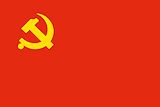
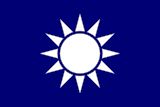
In China Bildung der Zweiten Einheitsfront (第二次国共合作) zwischen der Kommunistischen Partei Chinas (中國共產黨) und der Kuomintang-Partei ( 中國國民黨). Die chinesischen Anhänger der beiden Richtungen in Siam folgen zunächst der Einheitsfront, geben diese aber schonvor dem japanischen Einmarsch in Siam - vor allem aus geschäftlichen Gründen - auf.
"Zweite Einheitsfront (chinesisch 第二次国共合作) ist die Bezeichnung für die zweite Phase der Zusammenarbeit zwischen der Kommunistischen Partei Chinas (中國共產黨) und der Guomindang zwischen 1937 und 1945 während des Chinesisch-Japanischen Krieges ( 抗日戰爭). Die Zweite Einheitsfront wurde nach dem Xi'an-Zwischenfall (西安事变) Ende 1936 gegründet, bei dem Chiang Kai-shek ( 蔣介石, 1887 - 1975) von zweien seiner Generäle mit Unterstützung von Zhou Enlai (周恩來, 1898 - 1976) entführt und mit vorgehaltener Waffe gezwungen wurde, einen Waffenstillstand mit den Kommunisten zu unterschreiben. Ziel der Generäle war es, angesichts der japanischen Aggression die Kräfte Chinas nicht im Bürgerkrieg zu verschleißen.
Allerdings handelte es sich bei der Einheitsfront lediglich um ein Stillhalteabkommen für die Zeit des Kriegs. Es gab nicht nur keinerlei Koordination zwischen den kommunistischen und nationalistischen Truppen, die beiden Parteien stellten auch jeweils Truppen zur Absicherung ihres Einflussgebietes gegen die jeweils andere Partei ab und es kam sogar zu Kämpfen zwischen den Parteien, besonders 1940/41. Hier spielt besonders der Zwischenfall mit der Neuen 4. Armee 1940 eine große Rolle. Truppen der Guomindang griffen dabei mit über 50000 Soldaten die Neue 4. Armee mit etwa 9000 Mann an. Teile der 4. Armee wurden dabei getötet, der Rest gefangen genommen. Als Reaktion begann die Kommunistische Partei Chinas den Krieg gegen Japan dazu zu benutzen, sich auf einen Bürgerkrieg mit der Guomindang vorzubereiten.[1]
Die Zweite Einheitsfront zerbrach im Frühling 1946 nach der Kapitulation Japans."
[Quelle: http://de.wikipedia.org/wiki/Zweite_Einheitsfront. -- Zugriff am 2012-06-22]
1937-01-21


Der britischen Gesandte, Josiah Crosby (1880 - 1958), in einem vertraulichen Bericht an das Foreign Office:
"...the most significant feature to note during the twelve months was the growth in influence of Luang Pibul [พิบูลสงคราม, 1897 - 1964] and the military party at the expense of Luang Pradist [หลวงประดิษฐ์มนูธรรม = Pridi Phanomyong - ปรีดี พนมยงค์, 1900 - 1983] and the Liberals. . ." "....the soldiers and sailors under the leadership of L. Pibul remain the virtual masters of the country, and militarist propaganda become daily more intensive...The honour and glory of military life are drummed into the heads of school children...the "Yuvachon" [ยุวชนทหาร] or "Siamese Youth" movement (started 1935) has continued to grow throughout the year...and large numbers of the schoolboys in Bangkok now wear its uniform and undergo military drill. This movement is also being extended to the provinces. The creation of a corps of adult volunteers is likewise under consideration..."
"(the Siamese) admire the Japanese for their commercial success and fear them for their military strength, but they despise them in their hearts for their blundering diplomacy and their total inability to appreciate any point of view but their own."
[Zitiert in: Charivat Santaputra [จริย์วัฒน์ สันตะบุตร]: Thai foreign policy 1932-1946. -- Bangkok : Thai Khadi Research Institute, Thammasat University, 1985. -- 465 S. ; 21 cm. -- ISBN 974-335-091-8. -- S. 147, 153]
1937-01-28
Luang Phibulsongkram (พิบูลสงคราม, 1897 - 1964) wird Rektor der Chulalongkorn University (จุฬาลงกรณ์มหาวิทยาลัย)
1937-02

Tod des kanadischen Eisenbahningenieurs Henry Gittins (1858 - 1937).
Obituary der Times, 1937-02-13
"Obituary MR. HENRY GITTINS BUILDER OF SIAMESE RAILWAYS
Mr. Henry Gittins, late Adviser to
the Siamese State Railways, who died recently at his home in London at the age of 78, had a remarkable career as organizer and builder of railways in Siam.Born at Clifton, he was articled to a firm of architects at Bristol, but at the age of 24 went to Canada and there specialized in railway work. In 1876 the Governor of the Straits Settlements, during a visit to Bangkok, received from the King of Siam a concession to make surveys for a railway in that country. Twelve years later a British firm, to whom the concession had been assigned, began operations, and among the engineers they engaged was Gittins, not long returned from Canada to England with already some reputation in the railway world. As a junior assistant he drove the first peg in what became a great enterprise, and led him, through many trials and anxieties, to the front rank of his profession.
The survey having been completed, a contract to build the line was given to an Englishman, while, for political reasons which Siam would have avoided but could not, a German engineer was appointed to organize a Government Railway Department to supervise the contractor. This resulted, after a period of bitterness, and recrimination, in the cancellation of the contract, and the State Department took over the construction work. The services of Gittins, who had earned much credit while on the original survey, were eagerly sought by both the contractor and the Department: he joined the latter in May, 1892. In the years that followed he worked in many parts of the country and in all branches of the Department, passing rapidly from grade to grade until, in 1905, he was the senior divisional engineer and the next for appointment as deputy director, with the directorship to follow as a matter of course. But it was desired in the highest German quarters to make the Royal Siamese State Railways as far as possible a German enclave, and the director now informed the Government that if a British deputy director
were appointed, he and most of his men would resign. To save the Department from disruption and the State from a diplomatic imbroglio, Gittins was withdrawn from the executive, but appointed adviser to the Minister in control of communications, including the railways. It | says much for his tact and discretion that in this new capacity, which gave him vicarious authority over the whole Department, he continued in amicable relations with the director and his erstwhile colleagues.In 1909 Siam undertook, with British financial assistance, to complete a railway southwards from Bangkok to the frontier of British Malaya, and for this purpose a separate Department, free from German influence, was established. Gittins, who had personally explored the whole of this proposed route and who was by now recognized as the first authority on Siamese railway construction, became the head of the new Department, and within seven years built and opened for traffic 800 miles of line unsurpassed in construction, equipment, and organization by any railway in the East.
In 1917 Siam joined the Allies in the War, when the Germans in Government employ all disappeared, and by a Royal decree the two railway systems were amalgamated, with Prince Purachatra [พระเจ้าบรมวงศ์เธอ พระองค์เจ้าบุรฉัตรไชยากร กรมพระกำแพงเพ็ชรอัครโยธิน, 1881 – 1936] as Commissioner-General and Gittins as his consulting engineer and adviser. The Prince, who had been to Harrow and Cambridge, and had served with the Royal Engineers, and the adviser, with his long experience and study, worked together with mutual confidence and an immense enthusiasm. They soon welded the various lines into a homogeneous system, and brought the Department, officered by Englishmen and an increasing number of foreign-trained Siamese engineers, to a high slate of efficiency.
In 1922, at the age of 64, after 30 years of arduous life in the tropics, Gittins retired, to the great regret of his hosts of friends in Siam, more especially of the Prince and his beloved Department, and came home to England where two years of country life restored
his health almost completely. Afterwards he travelled a good deal, and ultimately settled in London. Siamese affairs continued to interest him, and his advice on engineering matters was frequently sought by the Government. Among his decorations were the grand crosses of the White Elephant and the Crown of Siam, and he was made a C. B. E. [Commander of the Order of the British Empire] in 1920. Prince Purachatra remained his close friend until he died last September.Gittins married and had two sons. Slight, erect, alert of eye and movement, with moustache cocked and little imperial jutting, there was a touch about him of the Elizabethan hero. He read much and had leanings towards poetry and romance, which he concealed from the public behind a certain brusqueness of manner and deportment. An entirely lovable man, with an easy dignity, he upheld in a foreign land the honour and prestige of his country."
[Abgebildet in: Gittins, Paul <1964 - >: On track : Henry Gittins, railway pioneer in Siam and Canada. -- Bangkok : River, 2014. -- 151 S. : Ill. ; 21 cm. -- ISBN 978-616-7339-42-9. -- S. 141. -- Fair use]
1937-03-15
Ein Fall von Mädchenhandel:
"In March, 1937, a case of selling a girl for immoral purposes dramatized the traffic, and gave direction to public opinion. The mother of the girl involved had been convicted of manufacturing counterfeit coins. She served a sentence of eight months, and when she returned home found that her fifteen-year-old daughter was missing. An older sister had been left in charge. She explained to the mother that the girl had taken a job in a Chinese house and was well and happy. The mother doubted the truth of this, and, fearing the worst, went to the police. The police discovered that the girl had been sold by her elder sister to a Cantonese man. He resold her to a house of prostitution. When the girl told her story she said that her elder sister had told her that her mother was in prison, needed money, and wanted her to get work at once. The girl was willing to help. She went with her elder sister to a woman who in turn led them to the Cantonese man. The man took them to a trafficker in women. A contract was drawn up and baht 80 was paid. The buyer and the brothel keeper then took her to have her registered as a prostitute. She thought she was being registered as a servant. When she was led to her future home she realized, too late, what she had agreed to do. She was compelled to carry out her part of the contract. She estimated that in a month she had earned more than baht 200. At Chinese New Year, in three days, she received over a hundred men at one baht per head. The brothel keeper took 25 per cent and allowed her to keep the rest. She had no freedom, however, and was a veritable slave." [Quelle: Nation. -- 1937-03-15. -- Zitiert in Landon (1939), S. 164]
1937-03-17
Aufhebung der Pflicht zu zwei Berufsschuljahren im Anschluss an vier Jahre Primarschule. Die Schulpflicht wird damit auf vier Jahre Primarschule reduziert. Die Bestimmung wird ab 1938 rechtskräftig.
Regierungsschulen sollen künftig nicht mehr für den Primarschulbereich zuständig sein. Für diesen soll nur noch lokale und private Schulen zuständig sein.
1937-03-21

Aus dem Jahresbericht des britischen Gesandten, Josiah Crosby (1880 - 1958):
"Public opinion exists only in embryo as yet...The great mass of the people-as distinguished from the intelligentsia and the dangerous semi-educated class-are good-natured and tolerant and free from anti-foreign bias". [Zitiert in: Charivat Santaputra [จริย์วัฒน์ สันตะบุตร]: Thai foreign policy 1932-1946. -- Bangkok : Thai Khadi Research Institute, Thammasat University, 1985. -- 465 S. ; 21 cm. -- ISBN 974-335-091-8. -- S. 123]
1937-03-24
Bangkok Times: Die Volksversammlung (Parlament) wird von der Regierung im Radio dafür gerügt, dass sie es gewagt hat, die Ausgaben fürs Militär zu kritisieren.
1937-03-31

Gesetz zur Klassifikation des königlichen Besitzes in
- Kronbesitz
- Staatsbesitz
- persönlicher Besitz
Die beiden ersten Formen sollen steuerfrei sein. Die Verwaltung des Großteils des königlichen Besitzes liegt beim Finanzministerium. Das Gesetz wird erst am 1937-07-09 bekanntgegeben. Bis dahin wird ein beträchtlicher Teil des Kronbesitzes an Grund und Boden an 34 Personen verkauft, darunter hochrangige Beamte wie Phra Riddhi Aganey, Landwirtschaftsminister. Die Verkaufspreise liegen weit unter dem Marktwert.
1937-03-31
Rede von Plaek Phibunsongkhram (แปลก พิบูลสงคราม, 1897 - 1964):
"The climax to Luang Bipul’s indiscretions came in a broadcast on March 31, 1937, which was subsequently glossed over by a more circumspect speech. Obviously it was inspired by a desire to silence the increasing opposition that he was meeting in the Assembly. In defense of the principle that might is right, he pointed out that Nazi Germany was "able to discard the need to live by the Treaty of Versailles"; that Japan’s "military strength, amounting to 60 per cent of her revenues, enabled her to walk out of the League of Nations unperturbed" and to progress generally because nobody dared to interfere with her; and that Italy was able to conquer Abyssinia as a result of her highly developed military prowess. Siam likewise would thrive in proportion to her military expenditures. To illustrate the vulnerability of Siam, he suggested the possibility that Japan might attack Singapore, and that Great Britain would be moved to assume the role of savior of Siam." [Quelle: Thompson, Virginia <1903 - 1990>: Thailand the new Siam. -- New York : Macmillan, 1941. -- S. 306f.]
ausführlich: http://www.payer.de/thailandchronik/ressourcen.htm